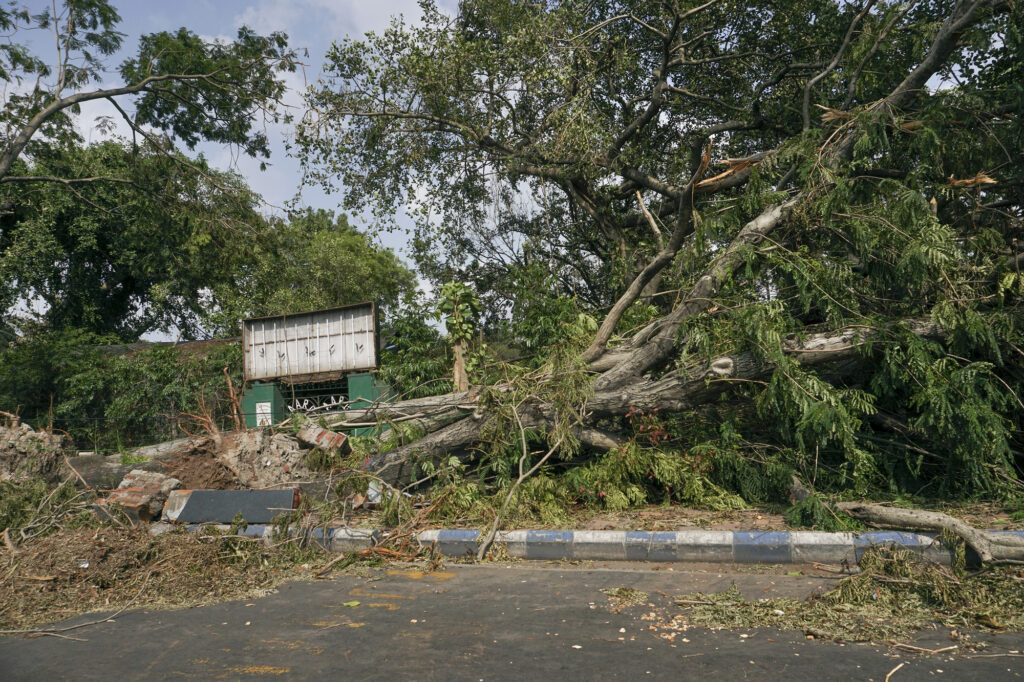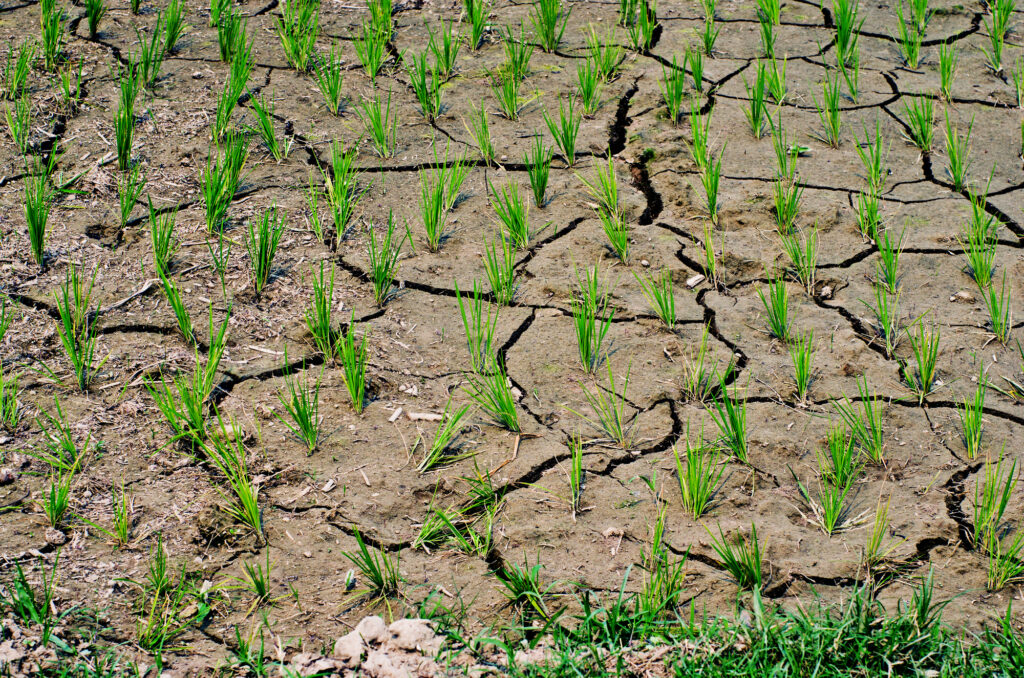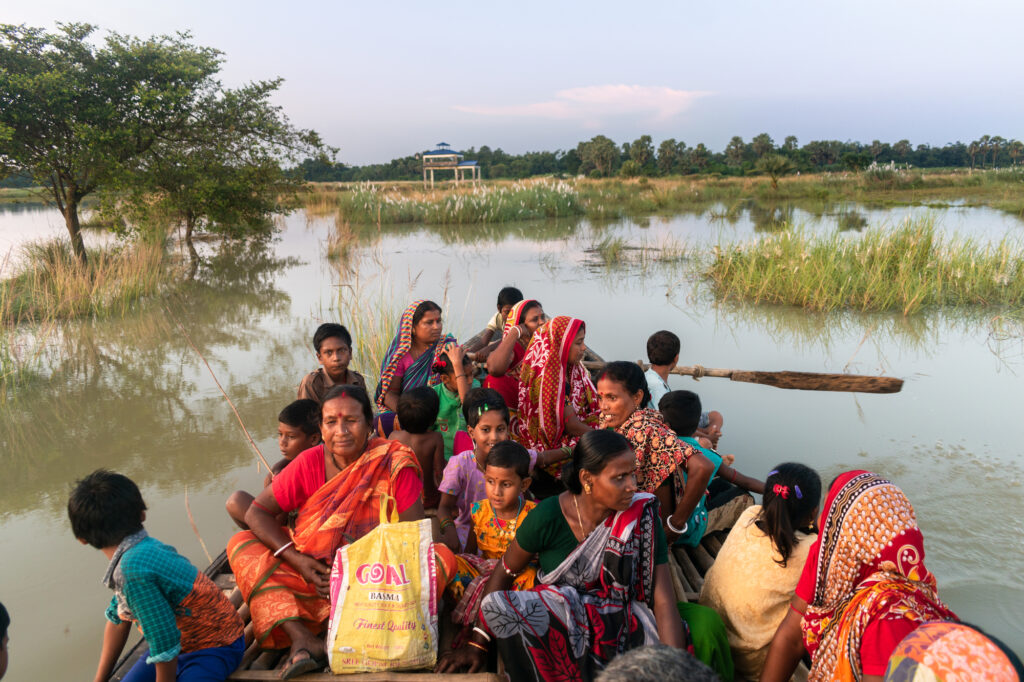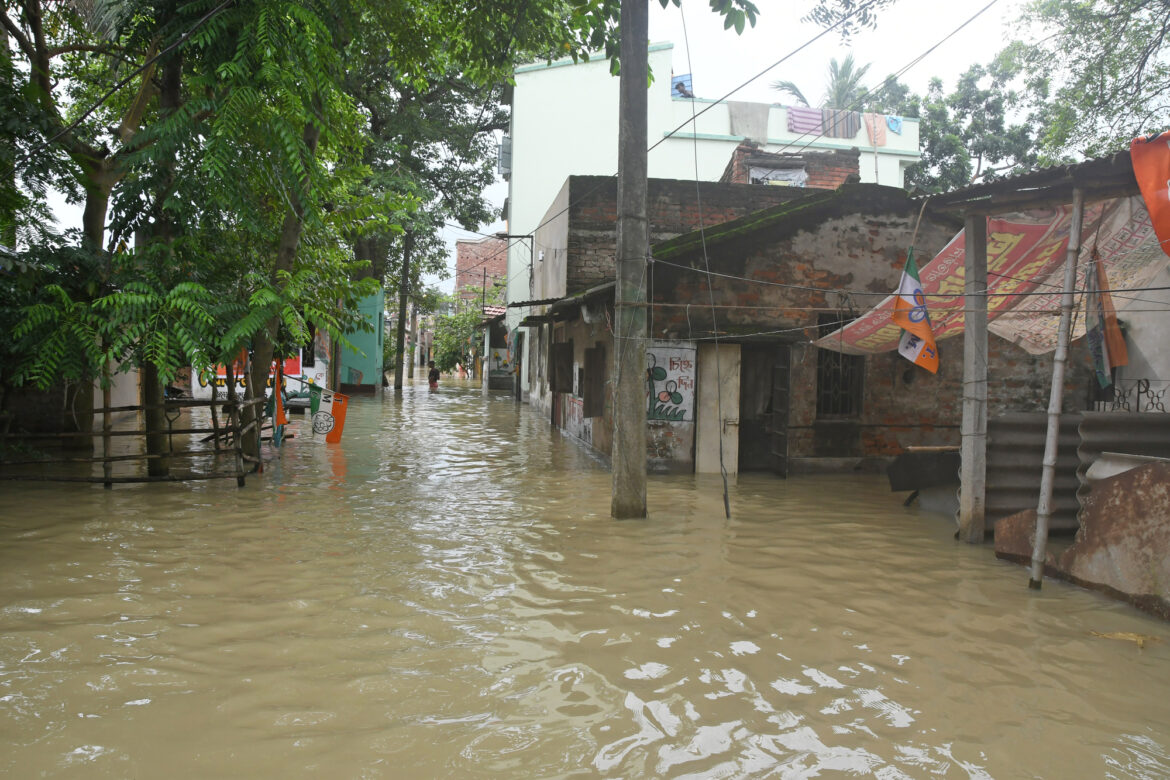Brief overview of the changing climate patterns in India and their impacts
India is one of the most vulnerable countries to the impacts of climate change due to its large population, high dependence on agriculture and its large coastal region. The country has experienced a significant change in its climate patterns in recent years including increased temperature, changes in monsoon patterns, and increased frequency of droughts, floods, and heat waves.
The Intergovernmental Panel on Climate Change (IPCC), 2019, reported that the mean temperature in India has increased by 0.6°C since the beginning of the 20th century, with the highest increase observed in the northwest and central regions of India. This has resulted in decreased crop yields, affecting the country’s food security. Additionally, the monsoon patterns in India have become more unpredictable, leading to either long dry spells or excessive rains. The frequency of floods, droughts, cloudbursts and even heat waves is increasing in India which has significant implications for the country’s food security, economy and human health.

Image: Super Cyclonic Storm Amphan hit the states of West Bengal and Odisha in 2020
Examples of increasing frequency and intensity of natural disasters
The increasing frequency and intensity of natural disasters in India is a direct result of climate change. The IPCC 2019 reported that the frequency of floods has increased by 15% since 1950 and the intensity of cyclones has increased by 20%. This is due to rising sea levels, warmer ocean temperatures, and changes in atmospheric circulation patterns. Additionally, the number of heat waves has increased significantly in recent years, with the number of days with temperatures above 40°C increasing by 2-3 times since 1950.
The country has been experiencing increasingly frequent and intense natural disasters such as cyclones, floods, cloudbursts and droughts, which have resulted in significant loss of life and destruction of infrastructure.
Few examples of natural disasters that have recently hit India:
Cyclone Fani is a recent example of the increasing intensity of natural disasters in India. It hit the eastern coast in May 2019, affecting the states of Odisha, Andhra Pradesh, and West Bengal, causing widespread damage to life and property. The cyclone was one of the strongest storms to hit India in two decades.
Another example of the increasing frequency of natural disasters in India is the recent floods in Assam. In 2022, the state was hit by a severe flood, affecting over 3 million people and causing widespread damage to homes and crops. The floods also resulted in the displacement of hundreds of thousands of people, and several losses of lives.
The drought in Maharashtra is also an example of the increasing frequency and intensity of natural disasters in India. In 2020, Maharashtra faced one of its worst droughts in decades due to deficient monsoon rainfall. The drought affected over 15,000 villages and led to a shortage of water for drinking and irrigation purposes. The state government declared over 151 talukas as drought-hit.

Image: Rice crops planted in drought land
These examples show the devastating impact of natural disasters in India and the urgent need to address the issue. Climate change mitigation and adaptation strategies, such as developing early warning systems, improving infrastructure, and increasing awareness, are crucial for reducing the impact of natural disasters.
Economic Impact of Natural Disasters in India
The country is prone to various natural disasters such as earthquakes, floods, cyclones, and droughts, which cause widespread damage and disrupt the normal functioning of the economy. Natural disasters often result in the loss of human lives, causing a significant decline in the workforce. The loss of human capital affects the overall productivity and economic growth of the country. For example, the Uttarakhand flash floods of 2013 resulted in the loss of over 6,000 lives and affected over 1 million people.
Floods, droughts, and cyclones result in the loss of crops, livestock, and fertile land, affecting the livelihoods of farmers and rural communities. Additionally, these disasters also cause damage to industries and factories, leading to a decline in production and loss of goods and services.
Natural disasters can cause extensive damage to infrastructure such as roads, bridges, and buildings, disrupting transportation and communication networks. This leads to a decline in trade and commerce, affecting overall economic activity. The earthquake in Bhuj, Gujarat, in 2001 caused extensive damage to the infrastructure, resulting in a decline in economic activity and loss of livelihoods.
The cost of repairing affected homes and other spaces normally runs extremely high pushing the economies right back to the starting point again or leading to an even deeper level of debt than before. In addition to this, the loss of human life is one of the most detrimental outgrowth due to these disastrous events. People who are directly or indirectly affected by these catastrophes tend to struggle in their daily survival leading to an increase in poverty levels across India.
Climate refugees: Displacement of people
The impact of climate change on coastal communities in India has been severe. Rising sea levels have caused saltwater intrusion into freshwater sources, making the soil infertile and leading to crop loss. This, in turn, has led to poverty and food insecurity among the affected population. In addition, riverbank erosion in India’s northeastern region has resulted in the displacement of thousands of families and loss of valuable agricultural land.
The United Nations Framework Convention on Climate Change (UNFCCC) has recognized the problem of climate refugees and has called for the development of effective strategies and policies to support the needs of these individuals. However, the problem of climate refugees in India is compounded by the absence of a legal framework to protect and assist them. Unlike refugees who flee their countries due to conflict or persecution, climate refugees have no legal status and receive little support from the government. As a result, they face numerous challenges such as lack of access to healthcare, education, and livelihood opportunities.
Climate refugees are an increasingly pressing concern, and it is critical that governments and organizations take action to support and protect these individuals. This includes providing resources and assistance to help refugees resettle and rebuild their lives, as well as addressing the underlying causes of climate change in order to prevent future displacement.

Image: Flood victims in West Bengal searching for shelter in small boats
Political implications
The National Disaster Management Authority (NDMA) is the central authority responsible for formulating and implementing disaster management policies in India. The NDMA coordinates with various state and national agencies to ensure a seamless response in times of disaster.
The government also provides financial assistance to affected communities through various schemes and programs. For example, the Prime Minister’s National Relief Fund provides financial assistance to individuals affected by natural disasters. The Ministry of Home Affairs also releases funds to the affected states for relief and rehabilitation measures.
In addition to financial assistance, the government also provides rehabilitation support to communities affected by disasters. This includes the provision of temporary shelter, food, and medical aid, as well as the reconstruction of damaged homes and infrastructure. The government also launches employment generation schemes to provide livelihood support to affected communities.
However, despite India being one of the most disaster-prone countries in the world, the government has faced criticism for its lack of role in providing relief and rehabilitation to communities affected by disasters. For example, the 2019 Cyclone Fani affected millions of people in the state of Odisha, but the government’s response was deemed insufficient by many. The same can be seen in the case of the 2017 floods in the state of Kerala, where the government was criticized for its slow response and lack of rehabilitation efforts.
Conclusion
Climate change is a critical issue that impacts the entire world, but its effects are especially pronounced in India. The country is experiencing a range of impacts, including rising temperatures, sea-level rise, declining water availability, and increased frequency of extreme weather events. These impacts have significant implications for Indian society and politics, which need to be addressed with urgency.
Climate change is contributing to increased frequency and severity of natural disasters. In addition, the impacts of sea-level rise and water scarcity are exacerbating existing inequalities and creating new ones, particularly for communities that are already marginalized and vulnerable.
In terms of politics, climate change is a highly divisive issue in India, with some groups and industries pushing back against efforts to mitigate its impacts. The government is grappling with balancing the need to address climate change with the economic growth that is crucial to India’s development. There is also a lack of political will and resources to effectively address the issue, which has resulted in limited progress and slow implementation of climate policies.
In conclusion, the impacts of climate change on Indian society and politics are significant and require urgent attention. India must take a more proactive and coordinated approach to address the issue, taking into account the needs of vulnerable communities and balancing the need for economic growth with the need to mitigate climate change.
References:
- Intergovernmental Panel on Climate Change. (2019). Climate Change and Land: An IPCC Special Report on climate change, desertification, land degradation, sustainable land management, food security, and greenhouse gas fluxes in terrestrial ecosystems. https://www.ipcc.ch/report/srccl/
- United Nations Framework Convention on Climate Change. (2015). Climate-Induced Displacement and Migration. Retrieved from https://unfccc.int/files/adaptation/groups_committees/loss_and_damage_executive_committee/application/pdf/briefing_paper_climate_induced_displacement_and_migration.pdf
- United Nations High Commissioner for Refugees. (2017). Climate Change and Disaster Displacement. Retrieved from https://www.unhcr.org/5975e6cf7.pdf
- Oxfam International. (n.d.). Climate change and displacement. Retrieved from https://www.oxfam.org/en/climate-change-and-displacement
- National Disaster Management Authority (NDMA) (2019). National Disaster Management Plan. https://ndma.gov.in/sites/default/files/PDF/ndmp-2019.pdf


